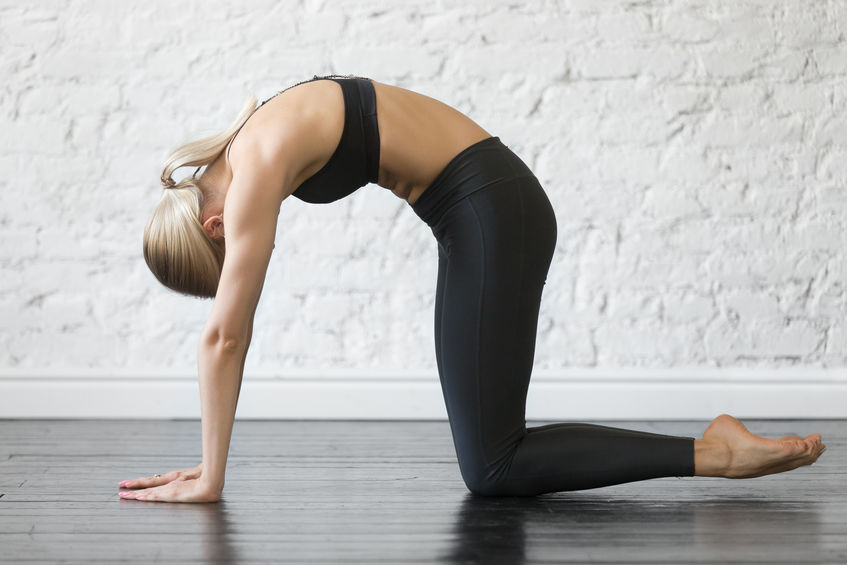Try Yoga For a Healthy Pelvic Floor
Posted in Pelvic Floor Therapy Chattanooga on Oct 11, 2019
If you’re a responsible adult, you probably work out sometimes. Maybe you have a leg day or core day. But do you ever focus time and energy specifically on strengthening your pelvic floor? When well-toned and properly activated, this group of muscles between the tailbone and pubic bone supports a host of health benefits you may find surprising. A healthy pelvic floor leads to a soothed nervous system, a balanced reproductive system, improved bladder function, healthy bowel function, and even the alleviation of hemorrhoids. That said, a neglected pelvic floor can actually be the root of a slew of problems.
Many women aren’t even aware the pelvic floor muscles need attention, and as a result, many are oblivious about the importance of maintaining a healthy and strong pelvic floor until they experience problems related to a weakened one. Such problems include reduced bladder control, incontinence, prolapse, and even decreased sexual sensation or potential for orgasm. But there are simple exercises you can practice that will help engage those important pelvic floor muscles, and prevent those issues that can arise when they become weakened.
Yoga Is Great For Your Pelvic Floor Muscles
Yoga is a great way to tone the group of muscles that extend from the pubic bone to the coccyx, through gentle stretching and toning. The pelvic floor muscles serve us in the basic day to day functions of our bodies, so it’s only right that we pay them the attention they’re due. That said, step one is learning to find and engage these muscles, which isn’t always as straightforward as working out your biceps, quads or abs. Through specific yoga poses and intentional breathing, you can learn to engage the muscles of the pelvic floor– giving a little TLC to a muscle group that does a lot more for you than you may think.

Try Constructive Rest Poses
One great yoga pose for pelvic floor strengthening is constructive rest or Savasana– specifically the variation with bent legs. The point of this pose is to bring your body to a state of complete neutrality. Enter this pose by lying on your back, feet wide and knees together, with both hands resting on your belly. Tune into your breath, relax, and observe the rise and fall of the belly with each inhale and exhale. Try to engage the abs at the bottom of each exhale. Intentional breathing releases pressure in the torso and engages your pelvic floor muscles too.
And Knees To Chest
Another helpful pose is knees to chest or Apanasana. While lying on your back, curl up and draw your knees to your chest and hold onto your shins as you exhale, engaging the abs. When you inhale place your feet back on the floor and stretch your arms overhead. You’ll feel stretching in your sides, belly, and back. Curl up again with your next exhale, and repeat the pattern, following along with the natural flow of your breath. This pose is helpful for relieving lower back pain, which can be a symptom of pelvic floor dysfunction.
And Cat-Cow
You can also draw awareness to the pelvic region and muscles therein with the classic pose known as Cat-Cow or Marjaryasana and Bitilasana. Place your hands and knees on the yoga mat directing under your shoulders and hips, then inhale into Cat pose by tilting the pelvis forward and arching your spine up like a cat. On the exhale, move into Cow pose by first dropping the tailbone and curving your back in the opposite direction. These poses can help release tension, and work through areas of the pelvis and back that may be painful or somewhat immobile.

And Deep Squats
Wide-legged squat or Malasana is another great pose that can really help open up the pelvic floor. Get into this pose by standing with your feet about a mat’s distance apart, then squat down. Press your elbows into your knees while you drop the tailbone toward the floor and lift the chest. Place prayer hands at heart center to help you connect to your breath while focusing on maintaining a long, flat back.
Come See Us!
If you have experienced pelvic pain yourself or have any questions, Meagan, the physical therapist behind Resilience Physical Therapy would love to connect with you, and help you find solutions.